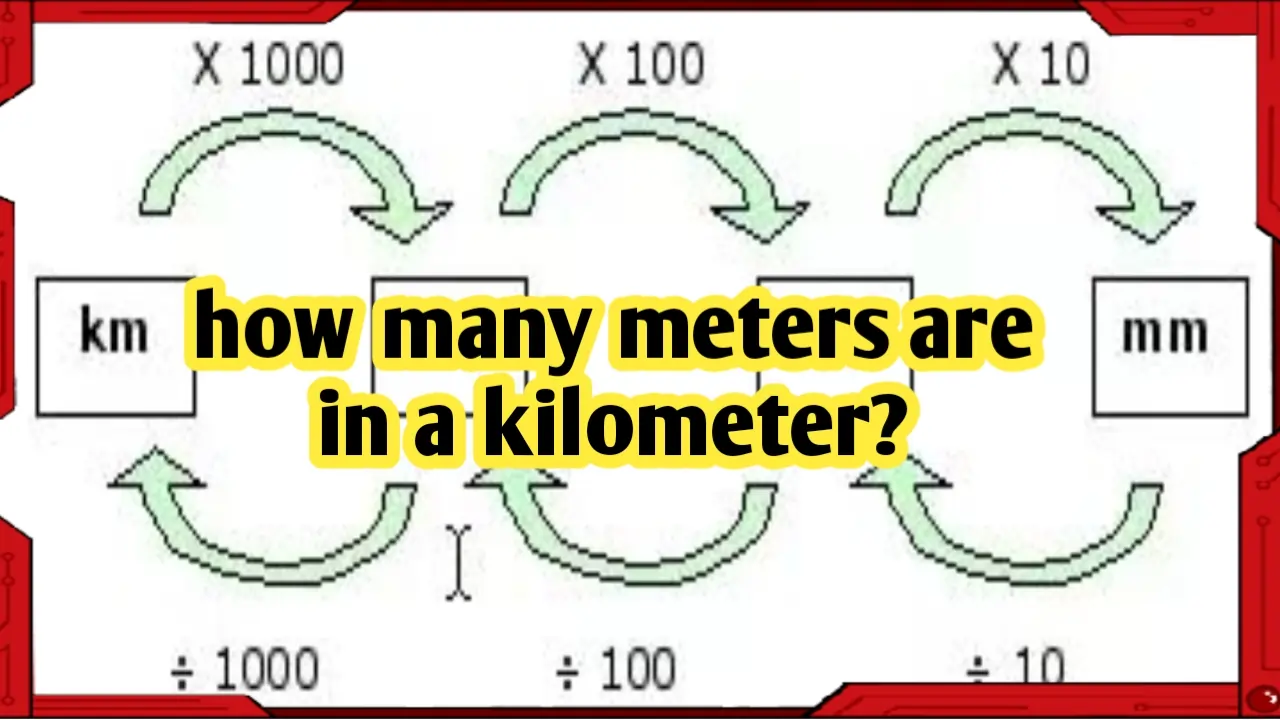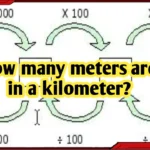Introduction
Welcome to the fascinating world of measurements, where precision and accuracy matter. In this article, we delve into the question, “how many meters are in a kilometer?”—unraveling the intricacies of the metric system and exploring its real-world applications.
Understanding Kilometers and Meters
Before we tackle the main question, let’s establish a solid understanding of both kilometers and meters. Kilometers, often denoted as “km,” are a unit of length in the metric system, while meters, denoted as “m,” are a smaller unit within the same system.
Exploring the Conversion Factor
To comprehend how these units relate, we need to explore the conversion factor between them. The magic number is 1,000: one kilometer equals 1,000 meters. This simple conversion factor forms the backbone of length measurements in the metric system.
How Many Meters Are in a Kilometer?
Now, the moment we’ve been waiting for. How many meters are in a kilometer? The answer is straightforward: 1 kilometer is equivalent to 1,000 meters. This relationship is crucial in various fields, from science and education to daily activities.
Unraveling the Metric System
To truly appreciate the connection between kilometers and meters, let’s unravel the metric system. Rooted in powers of ten, this system provides a logical and efficient way to express measurements, making it a global standard.
Why Kilometers and Meters Matter
Understanding the significance of kilometers and meters extends beyond academic knowledge. These units play a pivotal role in fields like physics, engineering, geography, and everyday activities like navigation and construction.
Real-life Applications
From determining the distance between two points on a map to measuring the length of a sports field, the applications of kilometers and meters are endless. Their accuracy and consistency make them invaluable in diverse scenarios.
The Journey from Kilometers to Meters
Embark on a journey through the metric landscape, where kilometers and meters seamlessly coexist. Navigating this terrain opens up a world of precise measurements and simplified mathematical operations.
Explaining the Concept to Kids
Breaking down complex concepts for young minds is essential. Learn effective ways to explain the relationship between kilometers and meters to children, fostering a foundation for understanding measurement.
Common Misconceptions
Clarify common misconceptions about kilometers and meters, ensuring a clear understanding of their role in the metric system. Dispelling myths enhances overall comprehension.
Historical Perspective
Delve into the historical roots of the metric system, understanding the motivations behind its development and global adoption. Historical context adds depth to your knowledge.
Benefits of Using Kilometers and Meters
Explore the benefits of employing kilometers and meters in measurements. Their consistency and simplicity make them superior choices in a world that values accuracy and efficiency.
Practical Examples and Scenarios
Dive into practical examples showcasing the seamless integration of kilometers and meters in everyday life. These scenarios highlight the practicality and ease of the metric system.
The Global Standard
Discover why the metric system, with kilometers and meters at its core, has become the global standard for measurement. Its widespread use fosters consistency and facilitates international communication.
Teaching Conversions in Schools
Examine effective teaching methods for conveying the conversion between kilometers and meters in educational settings. Engaging strategies empower students to grasp this fundamental concept.
Mastering Unit Conversions
Gain insights into mastering unit conversions within the metric system. Understanding the relationship between kilometers and meters lays the groundwork for proficiency in broader conversions.
Everyday Use in Measurement
Witness the everyday applications of kilometers and meters, from calculating travel distances to measuring ingredients in the kitchen. Embracing the metric system enhances accuracy in daily tasks.
The Precision of Kilometers and Meters
Appreciate the precision embedded in the use of kilometers and meters. Their consistent and logical nature contributes to accurate measurements in scientific experiments and engineering projects.
Challenges in Understanding
Acknowledge potential challenges in understanding the nuances of kilometers and meters. Addressing these challenges ensures a comprehensive grasp of these fundamental units of length.
The Significance in Sports
Explore the role of kilometers and meters in the world of sports. From marathon races to athletic field measurements, these units play a crucial role in determining performance and records.
Cultural Variances
Recognize cultural differences in the use of measurement units. While the metric system, with kilometers and meters, is globally accepted, some regions may still employ alternative systems.
Answering Frequently Asked Questions
A: There are 1,000 meters in a kilometer.
A: The metric system’s foundation in powers of ten allows for easy and consistent conversions, simplifying measurements across various scales.
A: Certainly! Common examples include measuring travel distances, room dimensions, and ingredient quantities in recipes.
A: The metric system is introduced progressively, with a focus on understanding the relationships between different units, including kilometers and meters.
A: Yes, challenges include cultural resistance, familiarity with alternative systems, and the need for widespread education on the metric system’s advantages.
A: Kilometers and meters offer precision and consistency in scientific measurements, serving as fundamental units in various research disciplines.
Conclusion
In conclusion, the question “how many meters are in a kilometer?” unravels a fascinating journey through the world of measurements. Kilometers and meters, deeply embedded in the metric system, offer a precise and globally accepted framework for understanding and expressing length. Embrace the simplicity and accuracy of these units, unlocking a world where precision meets everyday applications.










